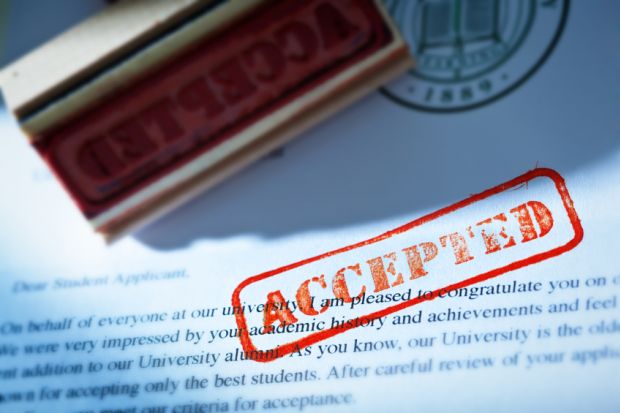Eighty leading US colleges and universities have announced a plan to reverse a decades-long process by which institutions have made their application processes increasingly similar.
The colleges and universities are creating a platform for new online portfolios for high school students, Inside Higher Ed reported.
The idea is to encourage ninth graders (those aged 14 and 15) to begin thinking more deeply about what they are learning or accomplishing in school, to create new ways for university admissions officers, community organisations and others to coach them, and to help them emerge in their senior years with a body of work that can be used to help identify appropriate institutions and apply to them.
Organisers of the new effort hope that it will minimise some of the disadvantages faced by school students without access to well-staffed guidance offices or private counsellors.
While the goals of the effort are ambitious, so are the resources and clout of the institutions participating in this campaign. These colleges include every Ivy League university, Stanford University and the University of Chicago; liberal arts colleges such as Amherst, Swarthmore and Williams; and leading public institutions such as the universities of Michigan, North Carolina at Chapel Hill and Virginia. The 80 members expect more institutions to join.
While they aim to create a new way for students to apply, they also hope that the portfolio system that they create introduces changes in high school education that could have an impact beyond those who apply to these institutions.
The new group is called the Coalition for Access, Affordability and Success. It will be open to public institutions with “affordable tuition along with need-based financial aid for in-state residents”, according to an outline provided by the coalition. (There is no clear definition yet for “affordable”.)
Private colleges may join if they “provide sufficient financial aid to meet the full, demonstrated financial need of every domestic student they admit”. To participate, institutions must also have a six-year federal graduation rate of 70 per cent, a threshold that will exclude many public institutions.
The new effort generated an immediate response on social media and websites where high school students trade gossip and tips about the application process. Many comments suggested that frustrations with the Common Application (which had seen application processes becoming more similar) mean that people are ready for an alternative. One comment on Twitter from a counsellor to high school students said: “Look out Common App – here comes viable competition”.
Others, however, were quick to note that most coalition members are wealthy, prestigious institutions, and raised questions about how this would help those who aren’t likely to be admitted to those colleges.
There are three main parts to the coalition’s work:
-
The high school student’s portfolio: this would be offered to all high school students, free, and they would be encouraged to add to it, starting in ninth grade, including examples of their best work, short essays on what they are most proud of, descriptions of their extracurricular activities and so forth.
-
New forms of interaction with high school students: students could opt to share (with any privacy levels they desire) some, or all, of their portfolios with people who might provide advice. Community organisers focused on education could check in on students to see how they are progressing. Institutions could, at students’ invitations, provide feedback as early as the freshman year of high school.
-
A new application system: the coalition will introduce a new online application. Like the Common Application, there will be some factual information that students would need to enter only once (name, high school), but once an applicant reaches the short answers, essay or other sections, each institution would prepare its own questions. The idea is to link many of the questions to material that applicants would have put in their portfolios, so that prospective students are not scrambling around for ideas on essays but are relying on the work that they did in school.
The portfolio system is scheduled to go live in January, and the application system in summer 2016. The goal of these three features is to change the way that students, institutions and society think about the admissions process.
Stephen M. Farmer, vice-president for enrolment and undergraduate admissions at the University of North Carolina at Chapel Hill, said that UNC was joining because of the opportunity in this new approach to interact with low-income students much earlier, and to help them prepare for admission.
“We’ve got to broaden our thinking about what constitutes talent,” he said, adding that this approach will lead universities to focus on developing the talent of high school students, not just picking already talented high school seniors.
后记
See Inside Higher Ed for more reaction and a list of participating universities.




